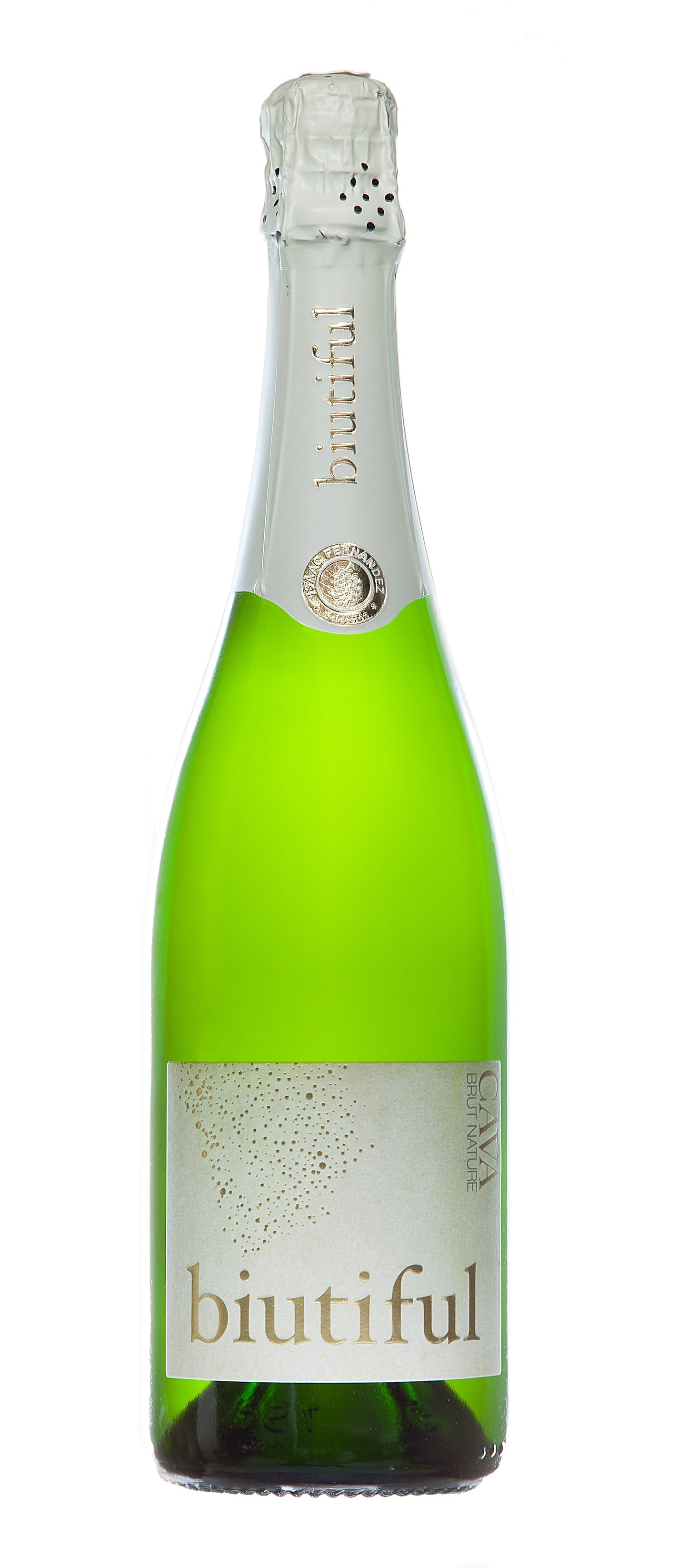1
/
of
1
Biutiful Brut Nature Cava - NV (750ml)
Biutiful Brut Nature Cava - NV (750ml)
Regular price
$15.99
Sale price
$15.99
Regular price
$17.99
Unit price
/
per
Made from a blend of 50% Macabeo, 35% Parellada and 15% Xarel•lo: the 3 indigenous varieties from Penedès.
*** Washington Post (Dave McIntyre - January 28, 2022)
"I’ve raved about Biutiful cavas before, and this Brut Nature may be my favorite yet...Top-notch bargain fizz."
With persistent bubbles in the glass and aromas of green pear, hazelnut and almond blossom, this sparkling wine has flavors of Granny Smith apple, baking bread, toasted nuts and jasmine. Bold acidity washes over the side palate and holds on into the finish. — Mike DeSimone
$25 Shipping on Orders +$299
Couldn't load pickup availability
Share :

- varietal
- Region
- Sub - Region
- Type
- Reviews
Trepat is know for it's intense cherry color and bright aromas of red fruits and plums, subtle oak notes and minerality.?
Spain's most popular sparkling wine. Cava is the only denominacion (appellation) in Spain not restricted to one delimited area. Although roughly 95% comes from the fertile plateau around the town of San Sadurni de Noya in Penedes, Catalonia, it is also produced across Spain in the regions of Rioja, Valencia, Aragon, Navarra, Castilla y Leon and the Basque country. For the most part Cava is made from a pretty unique blend of three white grapes. Firstly, Macabeo (also known as Viura in other parts of Spain), a fairly innocuous variety that provides the foundation for most of the blends. Secondly there is Xarel-lo, a grape capable of producing quite rich fruit that hence contributes most of the body and depth while Parellada, often regarded as the finest of the trio, adds a refined crispness and often green fruit notes of apples and pears. Chardonnay is the fourth white grape used in the region. Despite being a relative new comer (permitted only in 1986) it is becoming very popular, with plantings increasing at a faster rate over the traditional varieties. Rose Cava is made from 4 permitted dark skinned varieties; Monastrell (Mourvedre), Garnacha (Grenache), Trepat, and the less indigenous Pinot Noir. Interestingly, Cava's producers are responsible for one of the biggest technological advances in the sparkling wine industry. Quickly adopted across the globe, the gyropalette replaced the arduous and labor intensive job of "remuage," or riddling. Riddling is process by which the dead yeast cells are collected in the neck of the bottle before disgorgement. Originally done by hand, the bottles would gradually be turned and rotated one by one from a horizontal to vertical (upside down) position. The gyropalette, capable of turning hundreds of bottles at a time, mechanized the process. One of the factors that accounts for the style difference between Cava and other traditional method sparkling wines, other than climate, soil and grape varieties, is the length of time the wine spends on its lees during its second fermentation. While Gran Reservas require 30 months in the bottle before disgorgement, only nine months is required for what forms the vast majority of production. By contrast, Champagne rests on its lees for a minimum of 36 months and 16 months for vintages and non vintages respectively. The extra time in Champagne allows for the development of autolytic or yeasty characteristics reminiscent of toast and pastry. Cava on the other hand retains a more youthful dimension of fresh fruit.
NULL
Sparkling wine is a wine with high levels of carbon dioxide in it making it bubble. The carbon dioxide is a result of natural fermentation, either in a bottle or a specially designed tank, or as a result of carbon dioxide injection.Sparkling wine is usually white or rosé but there are many examples of red sparkling wines. The sweetness of sparkling wine can range from very dry "brut" styles to sweeter "doux" varieties.When one thinks of sparkling wine they usually think of Champagne, but this wine is exclusively produced in the Champagne region of France and many sparkling wines are produced in other countries and regions. Most countries reserve the word Champagne for a specific type from the Champagne region of France. The French terms "Mousseux" or "Crémant" are used to refer to sparkling wine not made in the Champagne region. German and Austrian sparkling wines are called Sekt. The United States is a significant producer of sparkling wine with producers in numerous states. Recently the United Kingdom, which produced some of the earliest examples of sparkling wine, has started producing sparkling wines again.


